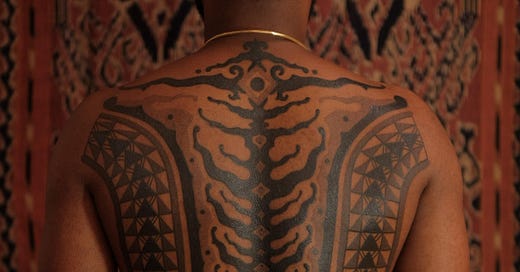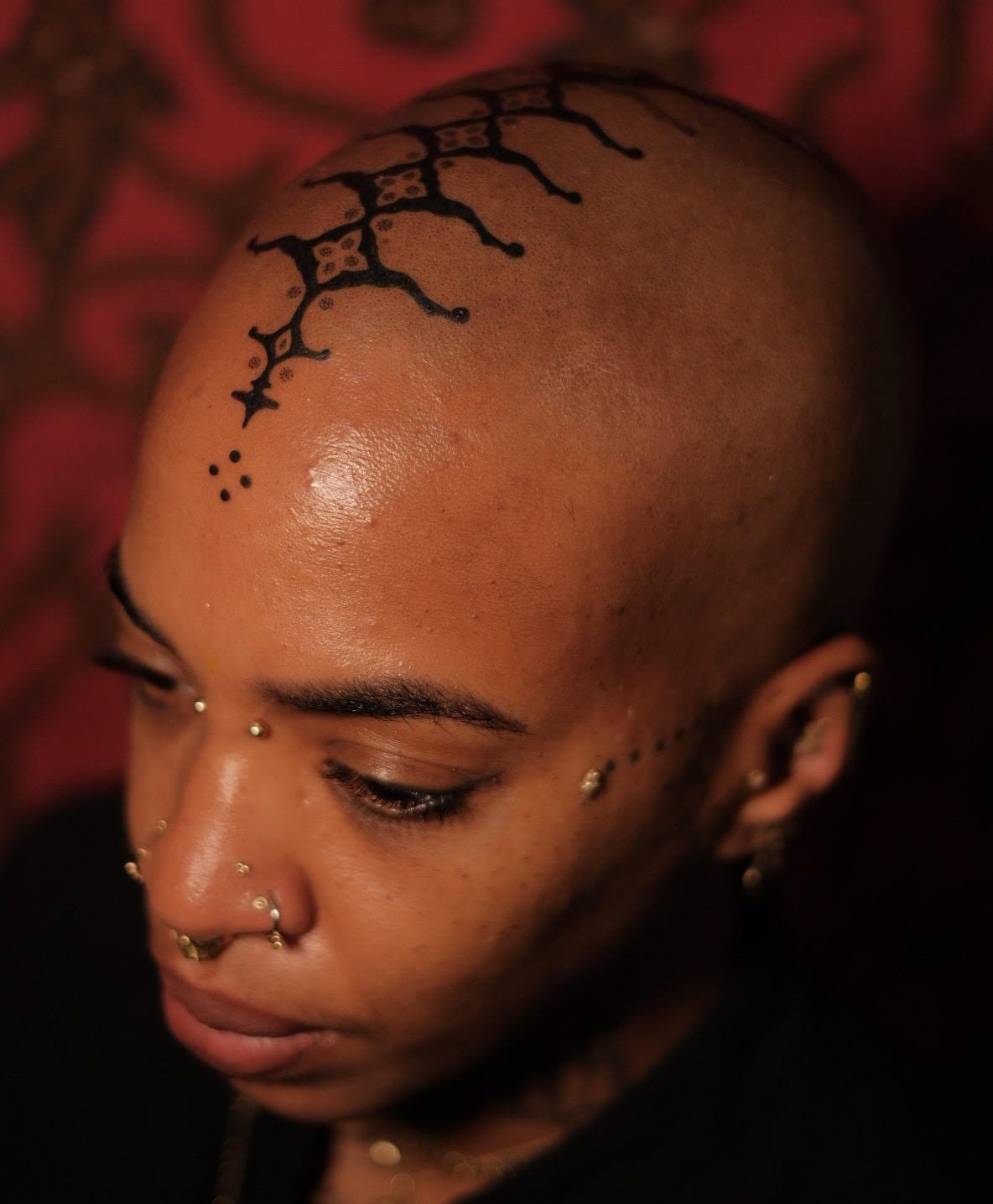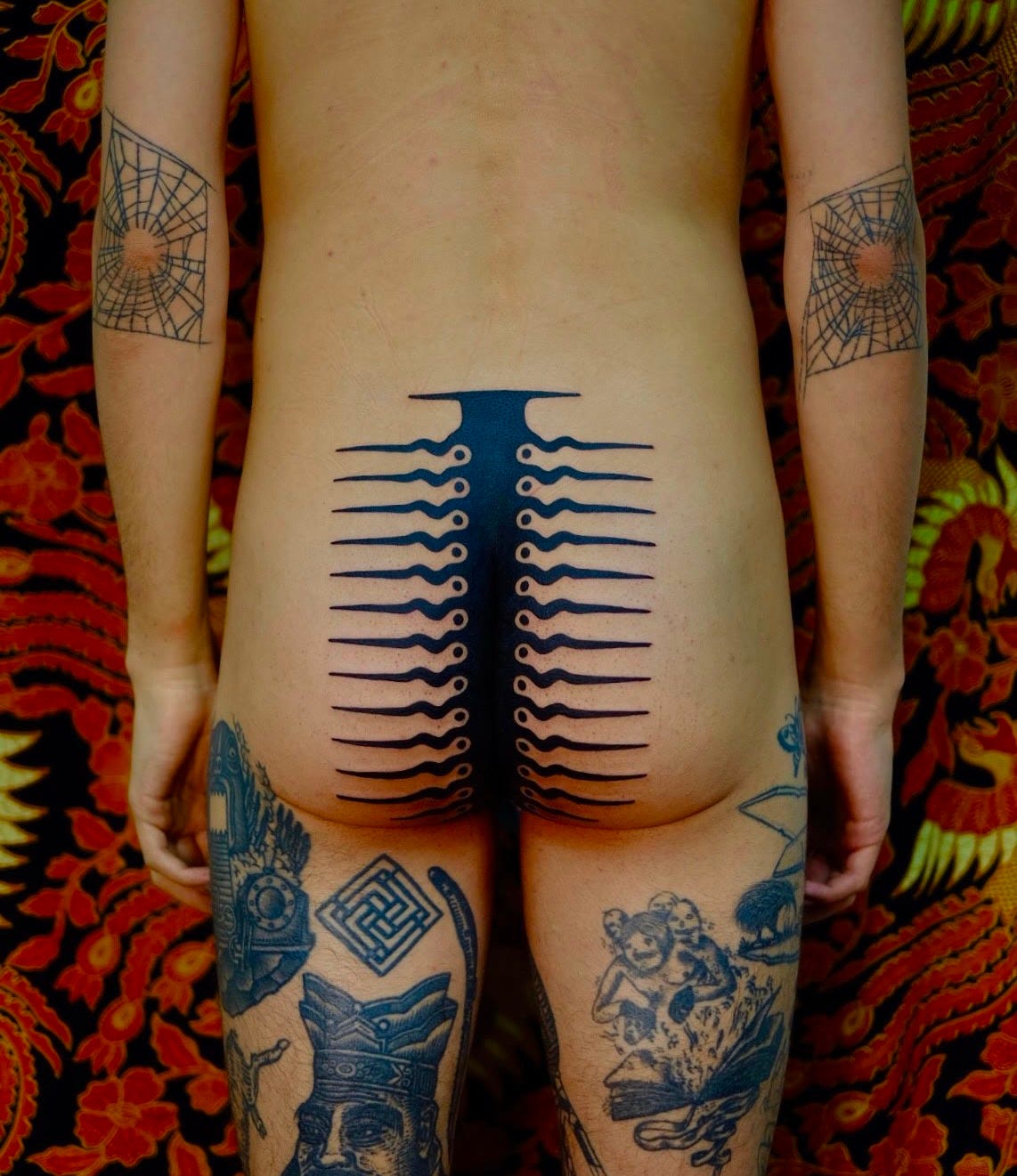Issue# 10: Mystical Lines with Jaya Suartika
The Balinese-Australian artist discusses the purpose of pain, and the theory of relativity, and property insurance
Jaya Suartika, a Balinese-Australian mural artist and tattooist, has a very calming and sage-like demeanor. So, it is fascinating that the origins of his professional career as a tattooist started from a desire to be disruptive. “For my younger self, it was to say a f*ck you to society. I wanted to offend everyone with my tattoos,” explains Jaya.
In the 2000s, Jaya dabbled in alternative and punk spaces in Australia, especially during his career as a DJ and musician. He was a DJ for nearly a decade when he began contemplating a pivot to architecture. He recalls the whirlwind that led to his tattooing career, “I was studying to be an architect, but I was still in the punk scene, getting interested in art. I started curating art shows with other artists, then drawing more, and the tattooing was a natural evolution from all that.”
Egos, Braque, and Balinese influenced artistry
Since then, his artistry has brought him recognition in the tattoo industry, but he has evolved plenty, both as a person and an artist. “When I first started, I wanted to stand out because my ego self was too attached to it, and I had to learn to acknowledge that,” he says. He wanted to differentiate himself from the tattoo art he was seeing on social media, and he pulled inspiration from Braque and Picasso’s takes on cubism. However, creating from those influences didn’t feel very authentic to him.
Around seven years ago, he deconstructed his approach to his tattoo work. “There were always, always patterns there,” Jaya emphasizes. Growing up between Australia and Indonesia, he spent time in temples in Bali, learning about its rich artistic culture and history. To strengthen his connection to his roots, he consciously embraced it in his art. “It felt like it was home like I should be here. It was the gateway for me to connect more to the idea of culture as a whole,” he states.
From that point, his relationship with his work changed. Now, he views himself as a tool, a vessel for a universal creative energy. During initial client intake, he always starts planning the piece based on the location in the body, and he starts with the question, “What do you feel already exists there?”
“We only experience time in a linear format, but it all exists at once, so really, I am excavating what's already there to them,” Jaya explains. In his mind, starting with that question propels the client to think about the piece as having a home in their body through time, which forces them to consider their comfort with the design. Even with this consideration, he believes that the tribalist style of tattooing ages very well, “I think people feel it’s organic, more in tune with the lines of the body, it’s timeless.”
The sacred purpose of pain
In the introduction of his book Sacred Pain: Hurting the Body for the Sake of the Soul, Ariel Glucklish defines pain as “a conscious signal and (it) participates in those qualities of consciousness that are essential for a broad-based wellness of some biological systems including human beings."
The book argues the experience of self-inflicted or voluntary ritual pain, i.e., sacred pain, transforms the individual's consciousness, identity, and, at times, their sense of belonging to the larger collective. Jaya would agree with Glucklish's sentiment.
He also tries to pass on to his clients an appreciation for the experience of receiving the tattoo. To that effect, he is not a fan of numbing creams in tattooing. In his opinion, “pain is the point, the tattoo is the reward. In many cultures, if you can withstand the pain of a tattoo, it meant you were an adult, and able to withstand the challenges of life.”
A changing Australia?
Throughout his life and career, he has watched Australia change in some ways and stay the same in others. When he was growing up, there were very few people of color around him. Today, his community in Adelaide, and Australia as a whole, has become more diverse over the years.
While demographics change, some things are still stuck in the past. Jaya acknowledges when he first started as an artist, it was normal to be wary of the lingering elements of gang culture in the tattoo scene. Today, an estimated one in five Australians have a tattoo, and the tattoo industry is big business. Yet, bureaucratically, tattoo studios are still considered high risk due to a perceived element of criminality.
According to Jaya, this preconceived notion impacts his ability to sustain his business, as many insurance companies refuse to cover tattoo parlors which makes insurance costs astronomical. "They are charging people for property insurance using stats from 90s crime activity data, it's almost feels like an annual salary on top of (other expenses)," Jaya says.
Nevertheless, Jaya feels grateful to be in Australia, living and working as an artist. Interestingly, while the challenges from institutions persist, the country has a reputation for being a “tattoo capital.” Australia's social attitudes and culture around tattooing have made it possible for an incredible tattoo scene to flourish with unbelievable tattoo artwork coming out of the area. As Jaya reflects on his experiences in the country, he asserts, "I think we are pretty privileged. I feel grateful, I feel lucky to be here."







